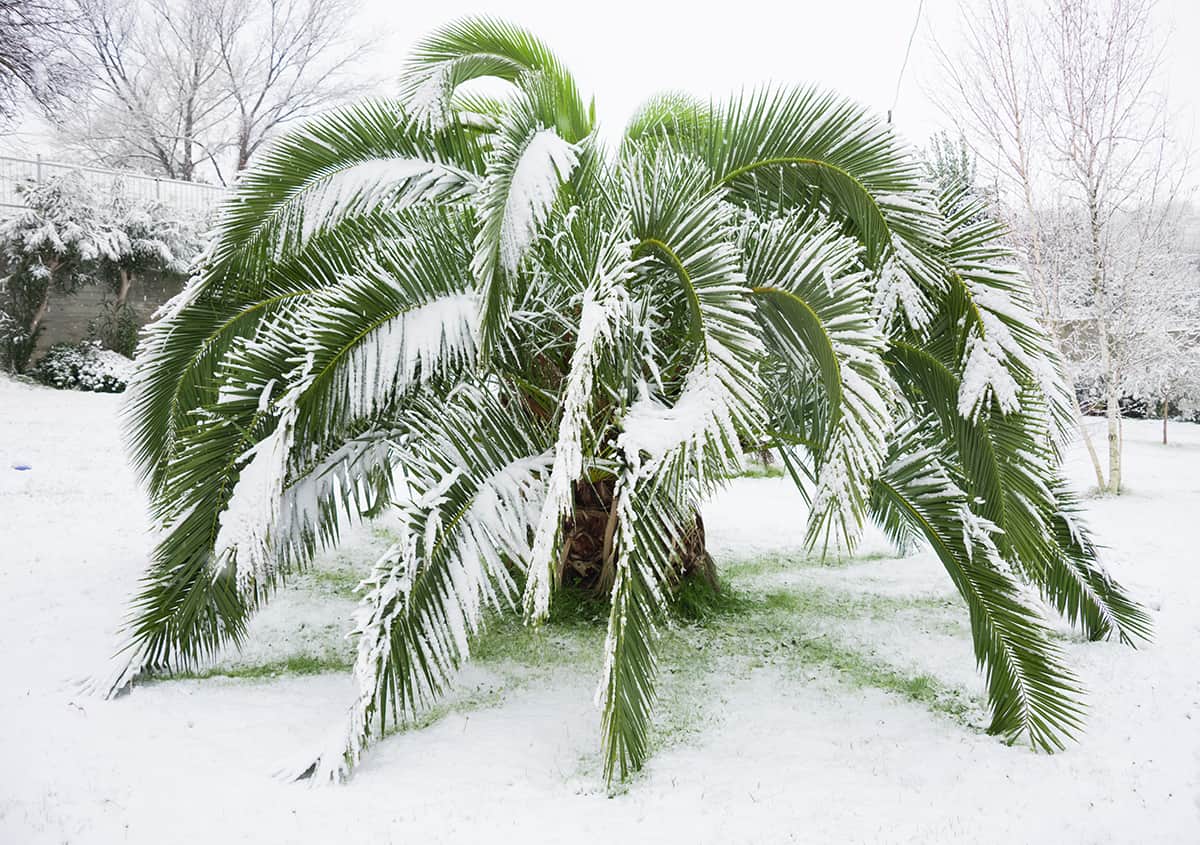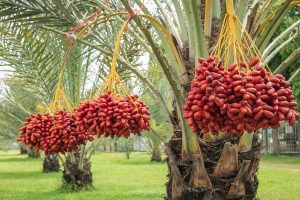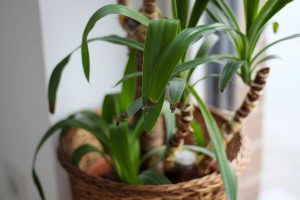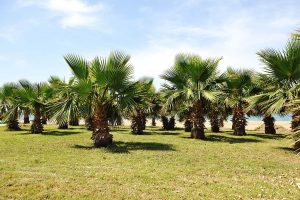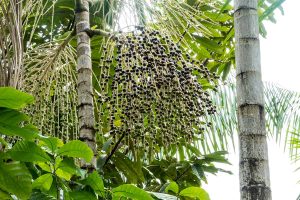Palm trees are commonly thought of as hot weather trees, which exist only in tropical and subtropical climates. While this is true of some species of palm, there are actually hundreds of cold-hardy types of palms that can survive in freezing weather.
Here we will look at the best palms to plant in climates that experience freezing conditions and steps you can take to ensure your palm remains undamaged during cold snaps.
Table of Contents
What is the Lowest Temperature for Palm Trees?
The lowest temperature that a palm tree can survive in will depend on the species. Palm trees which are known to be cold hardy, can survive in temperatures well below freezing, down to -15°F.
However, many palm trees are not suitable for growing in climates where freezing will occur, such as the Coconut Palm (Cocos nucifera), which needs to be grown in USDA zones 10 and above.
This tree can not tolerate temperatures lower than 32°F, and freezing occurs at 28°F, so it would not survive in freezing weather. This is why it is important to understand the climate needs of a palm tree in relation to your local climate before growing a palm outside.
Best Cold Climate Palms
Needle Palm Tree (Rhapidophyllum hystrix)
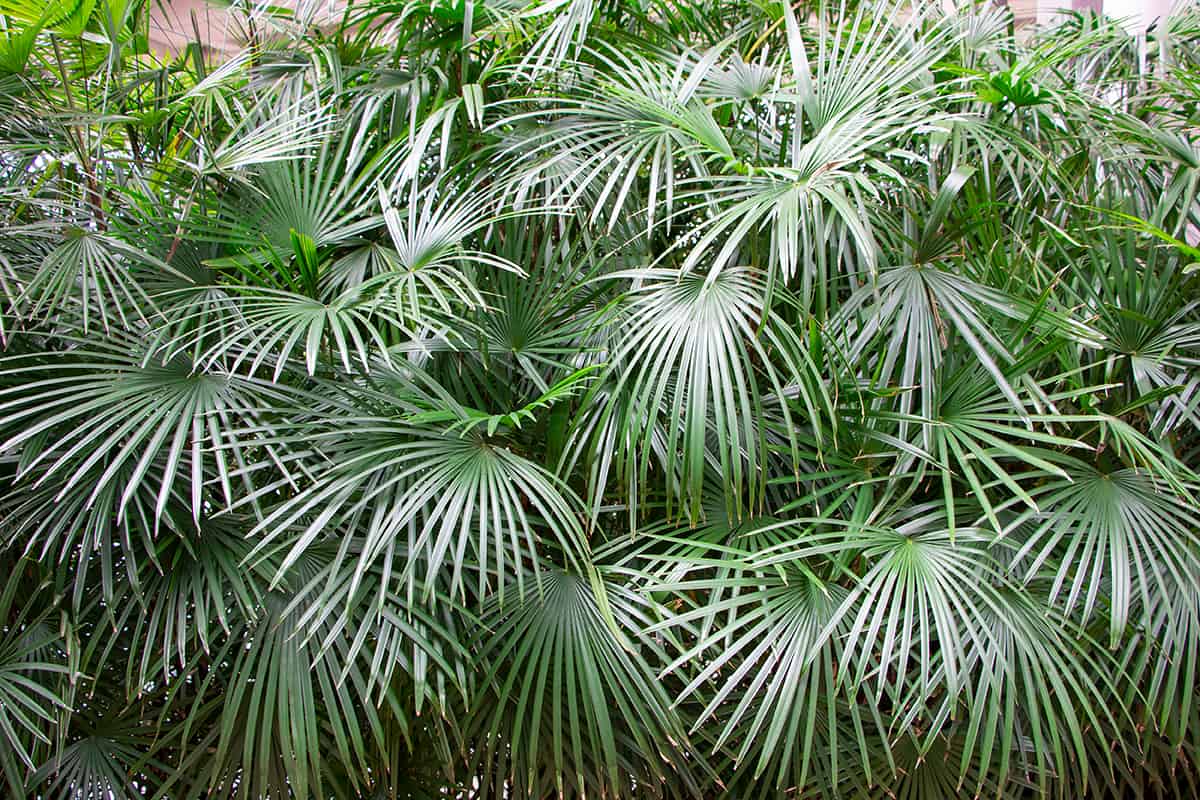
The Needle Palm Tree is native to the Southeastern United States, and it is known to be one of the most cold hardy palms in the world. It can be grown in USDA hardiness zones 5 through to 11, and when mature, it will survive in prolonged temperatures as low as -5°F without any sign of damage.
It has been known to tolerate temperatures down to -15°F, but foliage damage can be sustained, so it is best to winterize the palm if a severe cold is expected.
European Fan Palm (Chamaerops humilis)
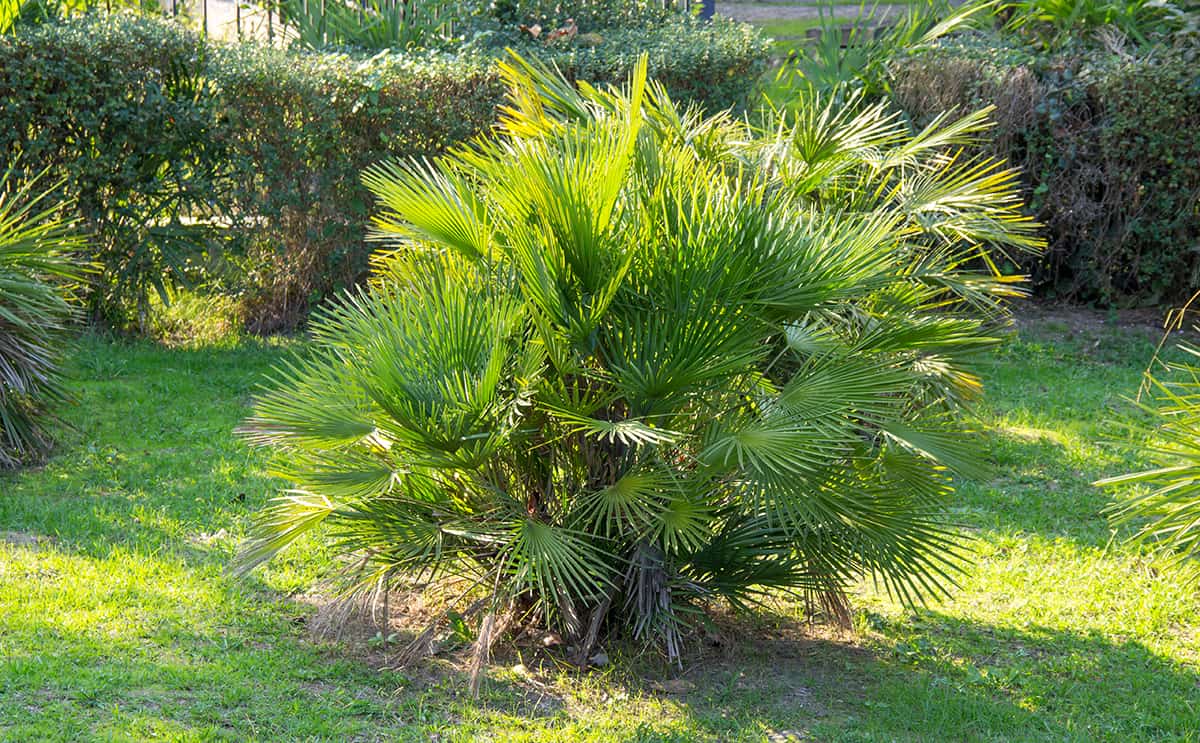
This palm tree is native to the Mediterranean region of Europe and is suitable for growing in USDA hardiness zones 7 to 11. When mature, it will tolerate lows of 5°F, which is significantly below freezing.
Saw Palmetto (Serenoa repens)
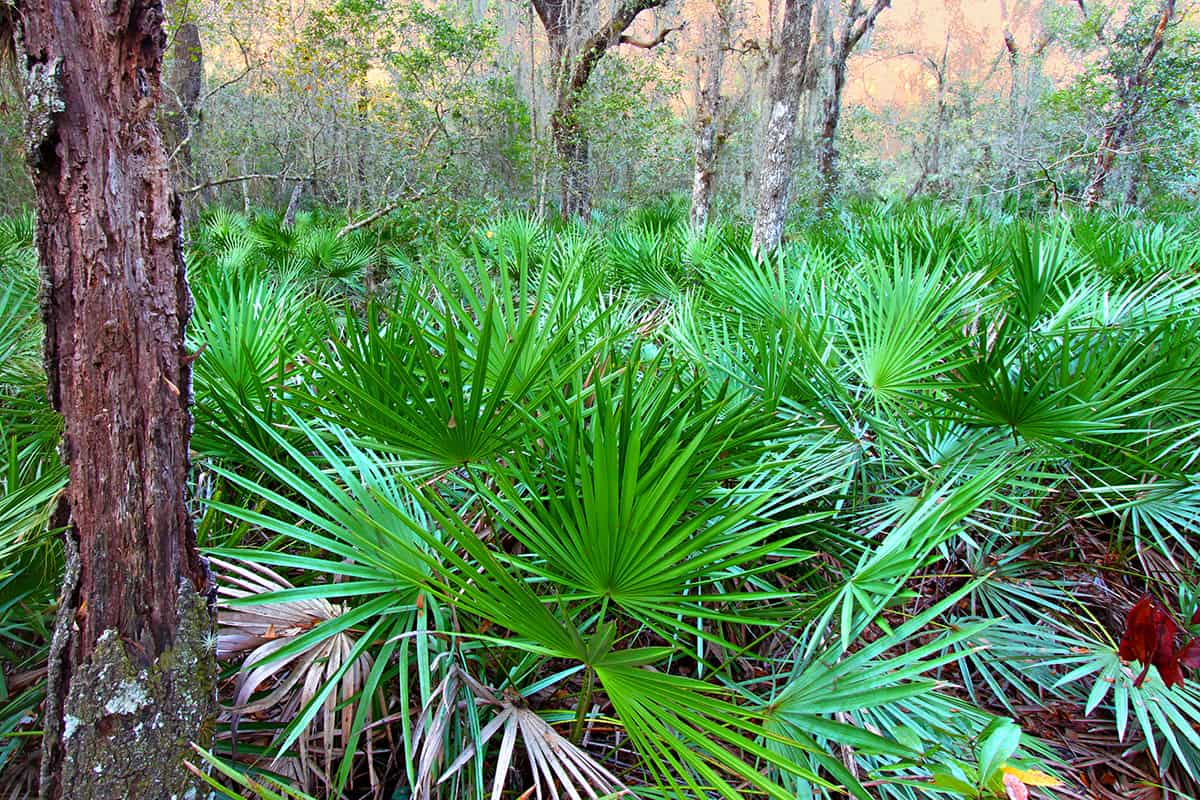
This is a palm that takes more of a shrub shape than a tree shape and is native to Florida. It is surprisingly cold hardy, being suited for growing in USDA hardiness zones 7 to 11. The slow-growing palm will survive in temperatures down to 5°F.
Date Palm (Phoenix dactylifera)
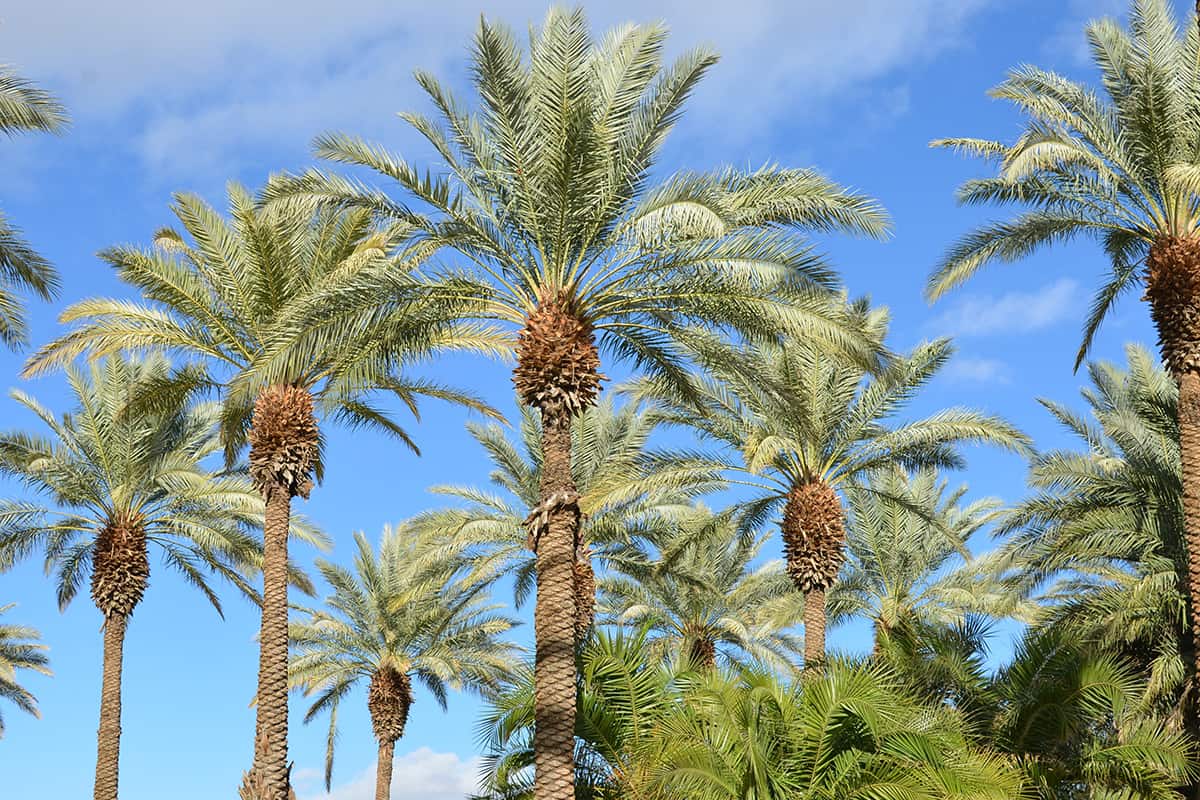
The Date Palm is one of the most well-known palm trees, producing edible date fruits that are dark and sweet. The tree is believed to originate in the Middle East, and it can be grown in USDA hardiness zones 8 to 11. It will tolerate cold snaps with temperatures as low as 15°F.
Everglades Palm (Acoelorrhaphe wrightii)
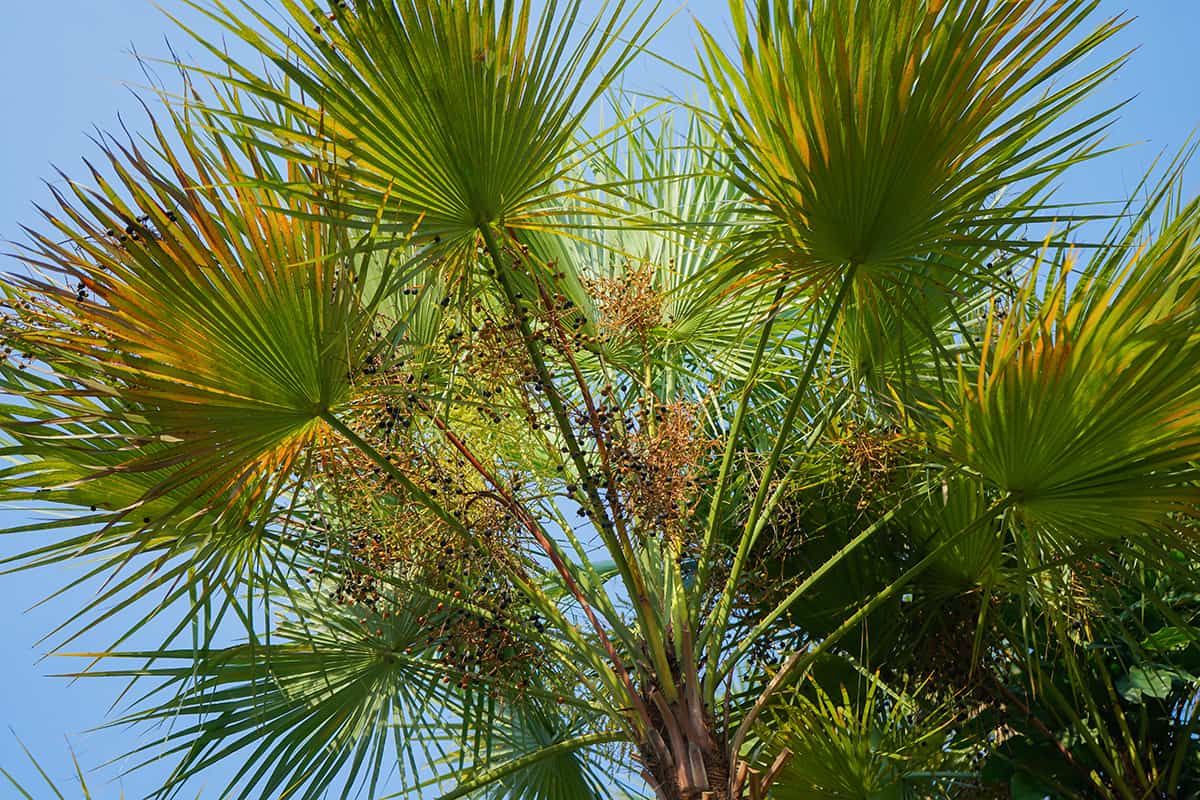
This palm is native to Mexico and the Caribbean and can survive freezing weather with temperatures as low as 20°F. This means it can be grown in USDA hardiness zones 9 to 11.
Cabbage Palm (Sabal palmetto)
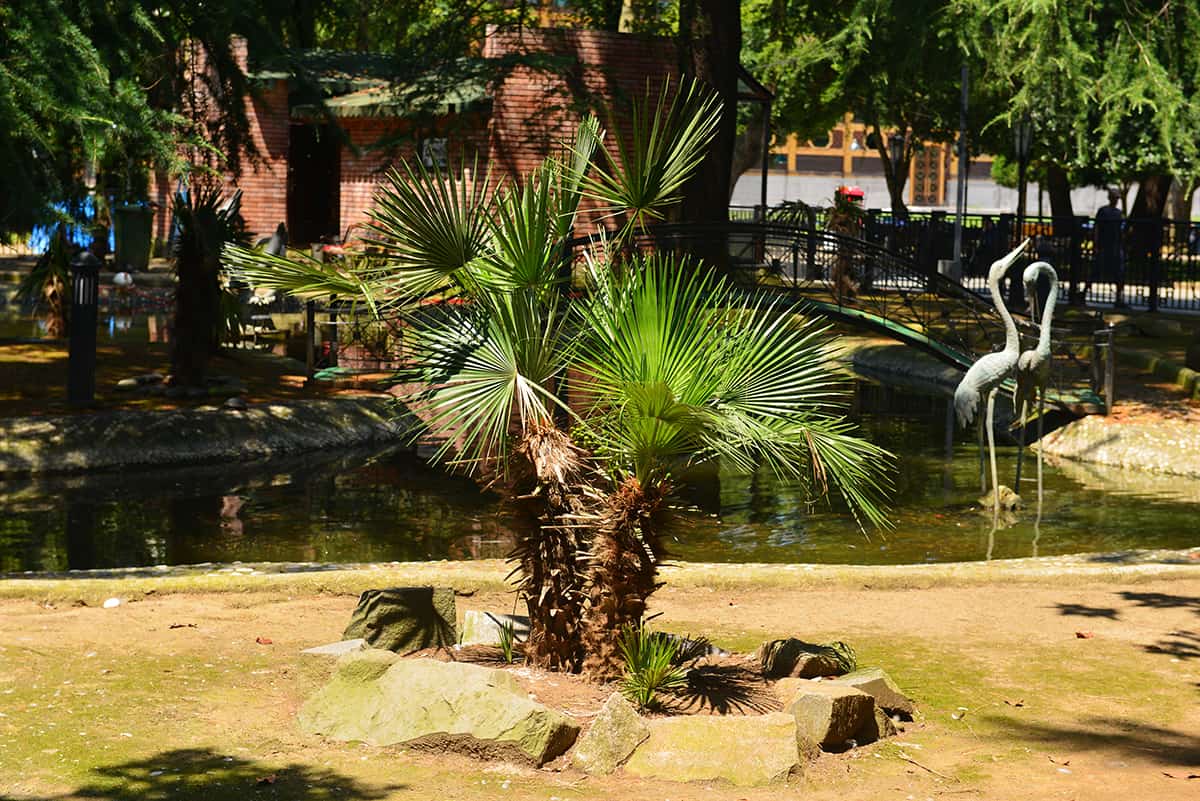
This palm is native to the Southeastern United States, and it is the state tree of both Florida and South Carolina. It is suitable for growing in USDA hardiness zones 8 to 11 and can withstand temperatures down to 10°F.
Pindo Palm Tree (Butia capitata)
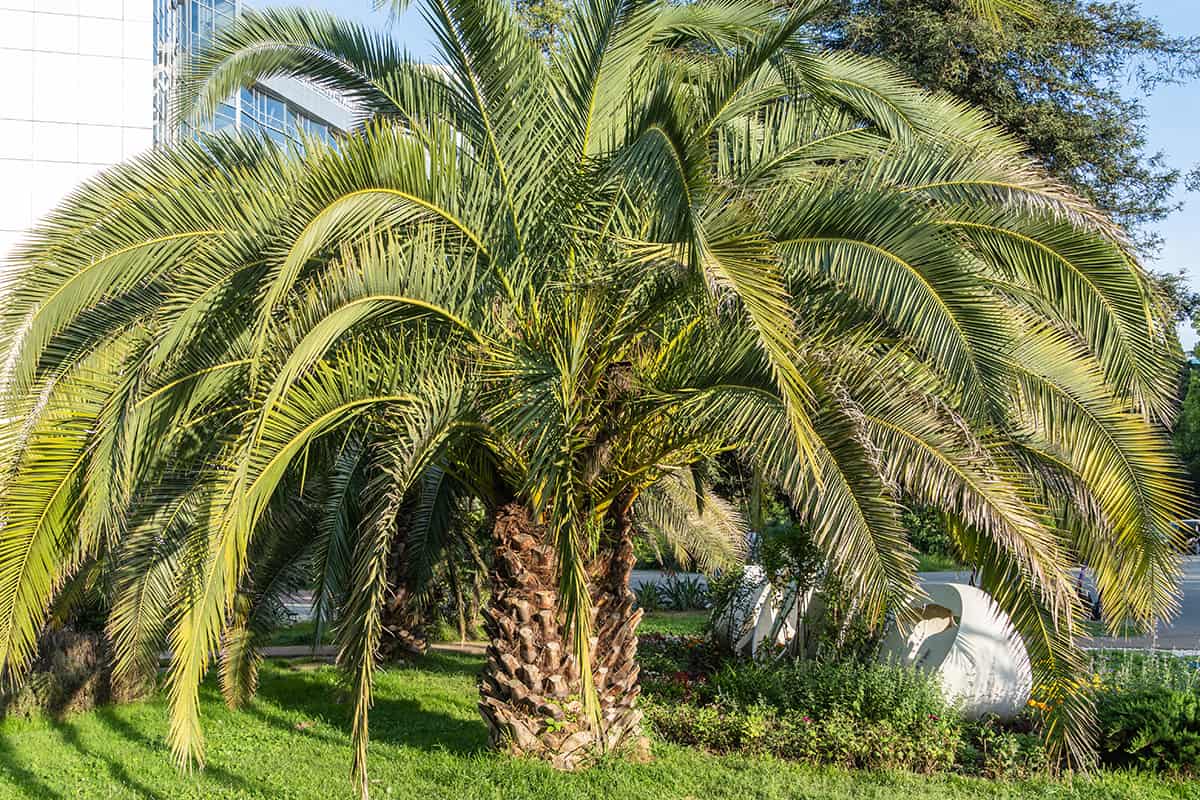
Also known as the Jelly Palm, this tree is native to South America. It can be grown in USDA hardiness zones 7 to 11, and is able to withstand temperatures as low as 5°F. Leaf damage should be expected if the temperature is consistently lower than 15°F, and winterizing is recommended. The tree will survive in temperatures down to 0°F, but all foliage will be lost.
How to Protect Palms in Freezing Weather
If you are expecting prolonged periods of low temperatures, then protecting your palm tree by winterizing it can help to prevent foliage damage, root damage, and damage to the stem or trunk.
Move potted palms
If you are growing outdoor potted palms, you have the option of moving them inside during freezing weather. You can place them in a garage with a window or inside the home.
Alternatively, if your potted palm is too big to bring indoors, consider moving it to a more sheltered area of the garden, such as in a corner, to protect them from harsh winds or drifts of snow.
Wrap palms
If your outdoor palm is in a pot, you can wrap the pot with gardener fabric to insulate it. This will help to prevent the roots from freezing. You can also wrap the foliage of the palm in burlap to keep the leaves from falling vulnerable to snow or frost.
Mulch ground
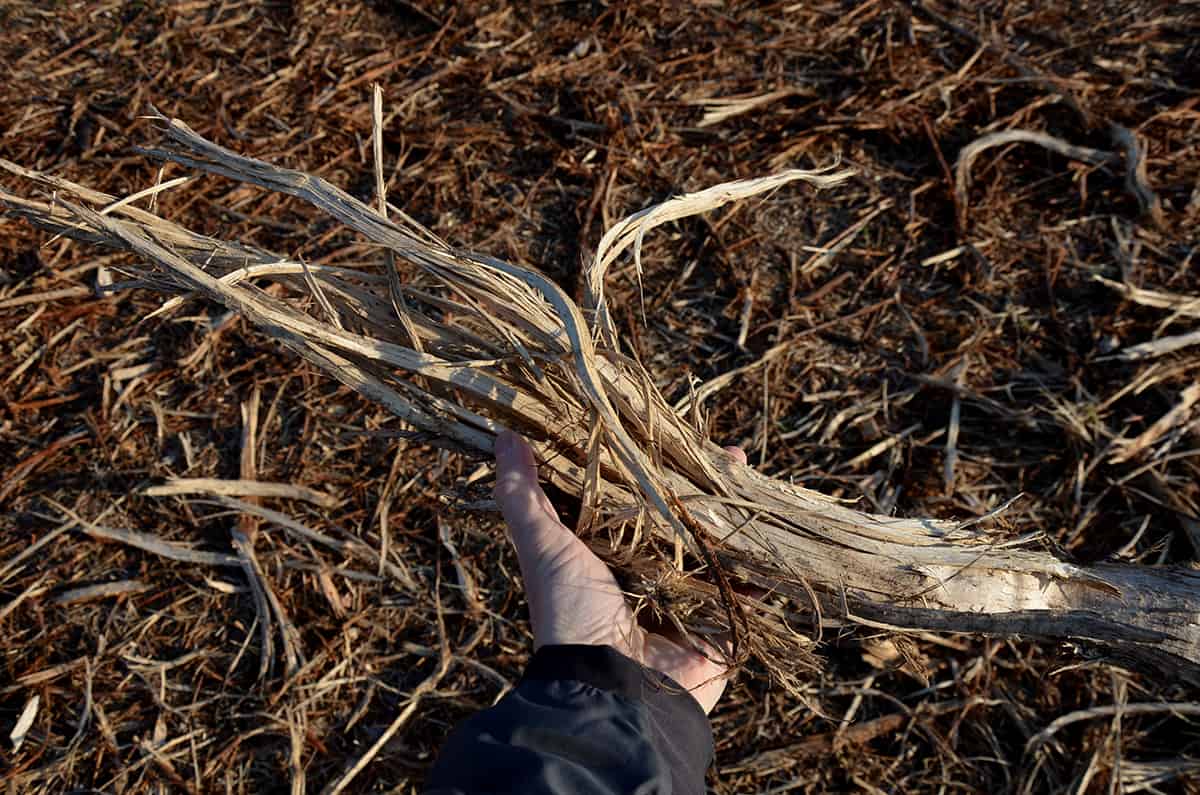
Mulching the ground around the base of the palm will help to insulate the soil so that the roots don’t freeze. This method has been known to increase the temperature of the soil by as much as 8°F at a depth of 4 inches compared to the soil that is not mulched.
Use lights
You can use a heating lamp directed at your palm tree if you are concerned that it may suffer damage from freezing temperatures, or you can make use of string lights.
Wrap your palm, including both the trunk and the fronds, in string lights to give it a festive look while also creating some extra warmth. Remember that LED lights will not radiate heat, so avoid these types of bulbs when winterizing your palms.
Can Frozen Palm Trees Recover?
The ability of a palm to recover from freezing will depend on the species and level of damage sustained. If a palm suffers damage from freezing weather in the form of a few dead, brown fronds, then it can survive and produce new fronds as long as there are still some healthy fronds remaining.
When a palm tree loses all of its fronds from freezing, it will most often not recover. If a palm that is not cold hardy gets partially frozen, then the frozen parts will generally not recover, but the parts which did not freeze can continue with healthy growth and help the tree to regenerate.
